(8121 products available)

















































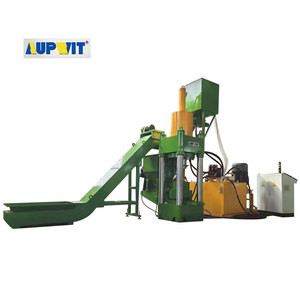











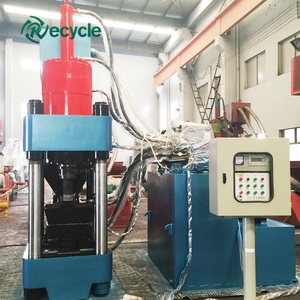
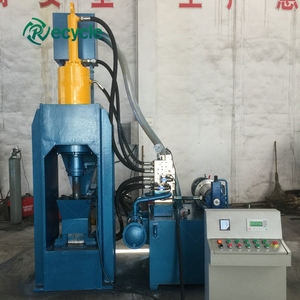







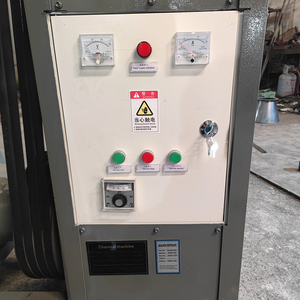



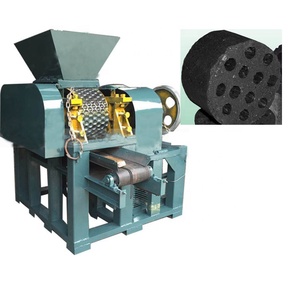
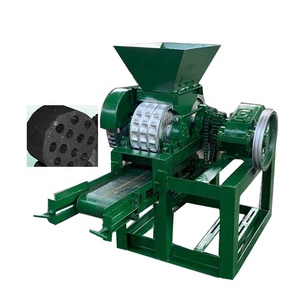



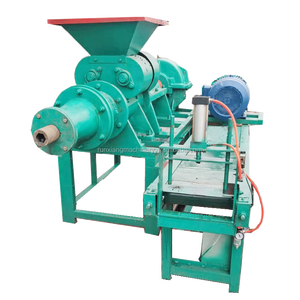













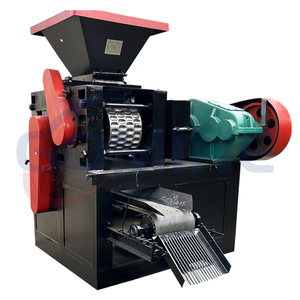

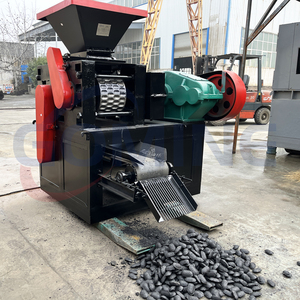




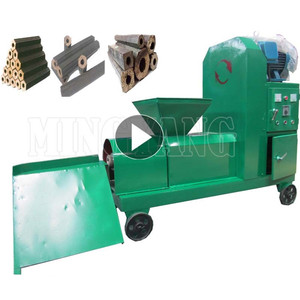
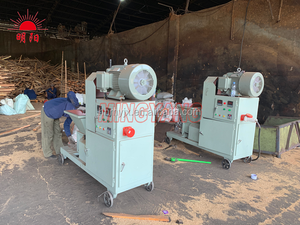

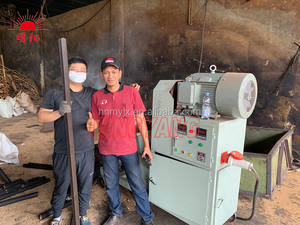





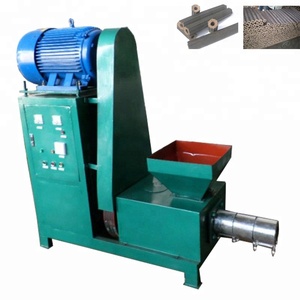
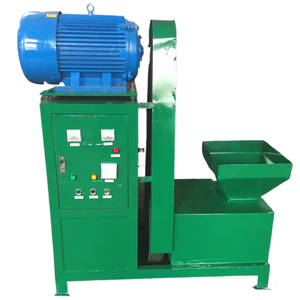
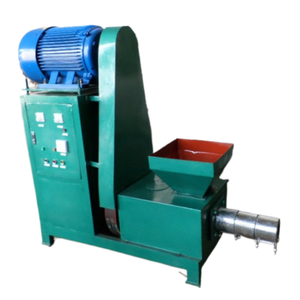
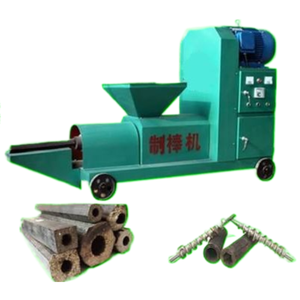

















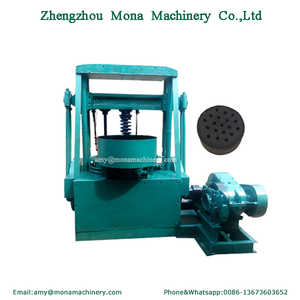


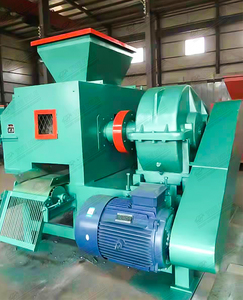

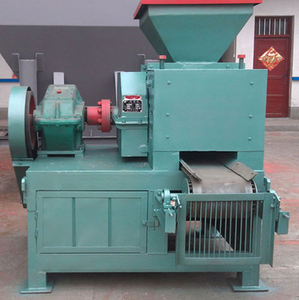







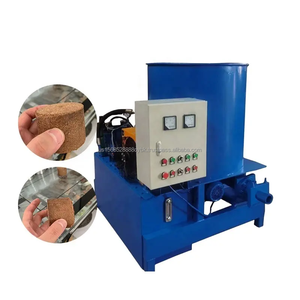




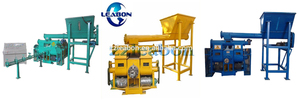
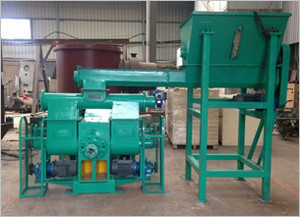




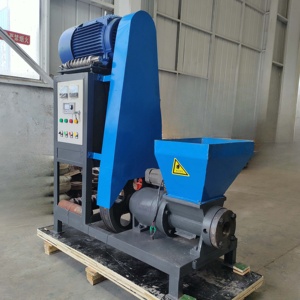











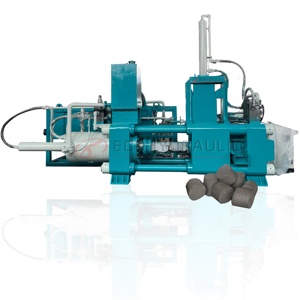









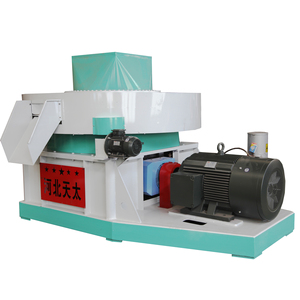


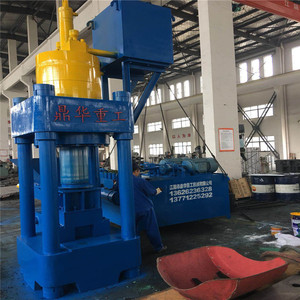





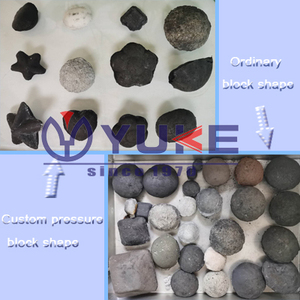










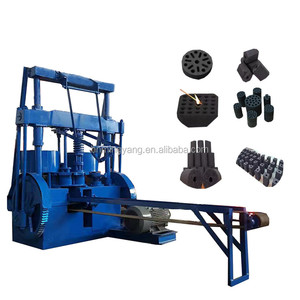
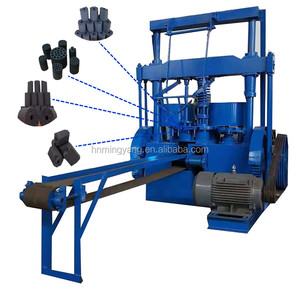


There are different types of automatic briquette machines available for making various kinds of briquettes.
Screw briquetting machine
The screw briquetting machine is the most common type. It uses a screw shaft to compress the raw materials and push the finished briquettes out of the outlet. It has a variable speed that works with different biomass waste. It has a wide-ranging capacity.
Hydraulic briquetting machine
A hydraulic briquetting machine uses a hydraulic system to push the raw materials together to make briquettes. It makes compact briquettes that burn for a long time. It is a good choice when the briquette material needs high pressure. The capacity is lower than the screw type.
Binder mixing briquette machine
This machine uses a mixture of biomass material and binder to make the briquettes. The binder helps to hold the material together. The machine works well with materials that do not stick together. It makes the briquettes more durable and uniform.
Coal briquette machine
Coal briquette machines are different from biomass machines because they use lime, water glass, and other chemical raw materials as binder slurry. The formation of coal briquettes in this machine is less than that in biomass machines but is more suited to different coal varieties.
Cubical briquette press machine
This machine presses the raw material to make round or square briquettes. It works by using heat and pressure without any chemical binder. The briquettes are easy to stack and sell. It is one of the most common machines that make cubical briquettes.
Automatic briquette machines have single or double shafts, with double-shaft briquetters working more efficiently than single ones. The machine may use electricity or diesel to work. Diesel-powered briquetting machines are helpful in areas without electric power.
The specifications of an automatic briquette-making machine may vary depending on the model. Some key specifications are as follows:
Material Input Size:
The size of unprocessed raw material that the automatic briquette machine can handle before any additional equipment is needed to process the material.
Compression Force:
The force used to briquette materials is measured in tons or kilonewtons. The required compression force depends on various factors.
These factors include the type of material being processed, its moisture content, density, and desired briquette size and shape.
Power Requirements:
The voltage and frequency that the briquette machine can use. It varies depending on manual and automatic machines. Automatic machines often further require a three-phase power supply to handle larger capacities.
Raw Material Moisture Content:
The operating moisture content range that a briquette machine can handle. Machines without drying systems require materials with a low moisture content. On the other hand, machines with drying systems are suitable for materials with higher moisture content.
Production Capacity:
The amount of raw material processed and transformed into briquettes per unit of time. It can be affected by various factors, including the type of material being processed, its density, moisture content, and the skill level of the machine's operator.
Durability:
The lifespan of an automatic briquette maker machine can measure in years or hours of operation. With proper maintenance and care, a high-quality machine can last for many years and provide consistent performance.
Proper maintenance keeps an automatic briquetting machine in optimal condition, avoids costly repairs, and prolongs its lifespan. The machine may perform various maintenance tasks, including checking its parts, cleaning, lubrication, equipment repair, etc.
Regular Inspection of Parts
A routine check of all parts of the briquette press machine ensures they are working properly and kept in good condition. Users should pay close attention to wear and tear of the parts and promptly replace those damaged or worn out to avoid affecting the performance and lifespan of the machine.
Cleaning
Users should clean the surfaces of the briquette machine periodically and remove any dust, debris, or residues. It helps prevent the accumulation of waste, which may damage the parts or affect the performance of the machine.
Lubrication
Regularly apply lubricating oil to the moving parts of the machine to ensure they are functioning smoothly. Users should refer to the manufacturer's guidelines and choose the suitable lubricant for the machine.
Automatic briquetting machines are used in industries that deal with waste material. Here are some of the common usage scenarios:
Charcoal production companies
Automatic charcoal briquette machines are widely used in the charcoal industry. They compact wood, agro, and forestry waste into charcoal briquettes for cooking, heating, or fueling engines.
Metallurgy industry
Metallurgy manufacturers use automatic briquette machines to convert fine metal powder into solid briquettes. The process enhances the handling, storage, and feeding of the metal into furnaces for smelting. It also offers a solution for increasing the yield of the raw material.
Mineral powder industries
Industries dealing with mineral powder such as calcium, talc, gypsum, or lime use automatic briquetting machines to improve storage and handling of the powder. Briquetting makes it easy to transport the powder, and the mineral dust is converted into briquettes that are secure and stable.
Biomass recycling companies
Biomass recycling firms use briquetting machines to convert agro waste, forestry, or biomass into fuel briquettes. The briquettes are sold to households or industry as an eco- friendly substitute for firewood or fossil fuels.
Rubber and plastic recycling plants
Recycling plants use briquetting machines to convert plastic and rubber waste into manageable briquettes. The briquettes are often used as feedstock for reprocessing the material into new products.
Integrated cement companies
Cement production companies can use briquetting machines to convert sludge, ash, or dust. The materials become raw material for cement production which helps to reduce environmental pollution.
Materials and their sources
Identifying the materials used for briquettes and their availability is crucial. Assess the types of biomass or waste materials accessible in the vicinity and their consistency. Explore the potential supply chains to ensure a steady inflow of raw materials for production.
End products and market
Focus on the specific types of briquettes that need to be produced, such as shape, size, and biomass materials. Research the properties, quality, and performance requirements of the briquettes. Apart from that, study the existing competition in the target market. Identify the strengths and weaknesses of other manufacturers to differentiate the business and devise a competitive strategy.
Production capacity
Consider the business's production capacity requirements based on the initial market analysis. Determine the number of operating hours, days, and months in a year, as well as the desired output per hour. Additionally, research the energy requirements of the briquette production process and explore options for cost-effective energy sources, such as solar or wind energy.
Technology
Understanding the different automatic briquette machine technologies available in the market is necessary. Comparing their advantages, disadvantages, cost-effectiveness, and suitability for the business's specific requirements is essential. Selecting the appropriate machine that aligns with the business's objectives and growth potential allows investing in a high-quality, reliable machine that offers efficient production, minimal downtime, and excellent customer support is necessary.
Machines and their suppliers
Investigate the different types of automatic briquette machines available in the market, including their features, specifications, and prices. Evaluate the reputation, experience, and track record of machine suppliers. Reading customer reviews and ratings, and seeking references from other customers, helps to assess the supplier's reliability and credibility. Exploring the option of leasing or financing the machine instead of outright purchase can be an alternative.
Feedstock preparation
Assess the need for feedstock preparation, such as drying, grinding, or mixing, before briquette formation. Identify the additional machines or equipment required for this process and factor in their costs and logistics.
Quality control
Implementing quality control measures at different stages of the production process helps monitor and ensure consistent product quality. It also helps identify potential issues or deviations early on, enabling timely corrective actions.
Human resources
Finding skilled and experienced workers for the production process can be challenging. Assess the training needs of the employees and develop a comprehensive training program to ensure efficient and smooth operational processes. Every automatic briquette machine requires particular expertise and knowledge for handling, operation, maintenance, and troubleshooting.
Environmental impact
Evaluate the environmental impact of the briquette production process, including waste generation, emissions, and resource consumption. Implement sustainable practices, such as waste minimization, recycling, and energy-efficient technologies, to reduce the environmental footprint.
Q1: Which raw material is used in the automatic briquette machine?
A1: The machine can convert various types of biomass waste into fuel briquette. Common raw materials include wood residue, agricultural waste, forestry waste, charcoal dust, straw, paper pulp, rice husk, and groundnut shell.
Q2: Does the automatic briquette machine consume a lot of electricity?
A2: The machine's power requirement depends on its size and production capacity. However, automatic briquette machines are efficient, using about 70 to 90 Kw per hour.
Q3: How long does it take to heat the automatic briquette machine?
A3: The heating time varies depending on the machine's size, production capacity, and insulation. Heating the machine can take 30 minutes to 2 hours.
Q4: What are the benefits of an automatic briquette machine?
A4: The machine has many benefits. It can convert large volumes of biomass waste into high-quality fuel efficiently. The automatic feeding system also reduces labor costs and the need for constant supervision.
Q5: Can the automatic briquette machine work continuously for 24 hours?
A5: Yes, some models can work continuously for 24 hours without stopping. Businesses that need high production capacity should look for models that can work continuously. These models have larger power supply and heating capacity.